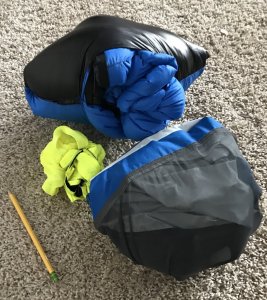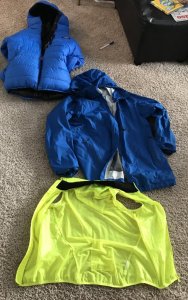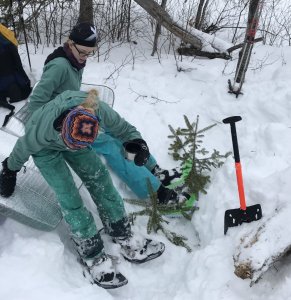Then, clothing. You might already have a real good handle on this, but, the Bay Area isn’t known for it‘s winter conditions, so here is the info just in case:

I see temperatures of 50F for Tahoe this Saturday. Think hiking or biking in 50F, what would you wear?
If you have unlined shell pants with venting zips, I would wear those, with some (compression) shorts underneath, to prevent chafing and so you can open the zips up wide without flashing underwear.
If your normal alpine pants are lined, do you have any rain pants, wind pants or Softshell pants?
For the upper body, in those temps, a nice thin baselayer or sun shirt with long sleeves will be key. Many people like a hood to protect their neck from sun.
Otherwise, a buff for the same purpose. A baseball cap to shield your eyes and face from sun.
A thin stocking hat, headband or buff in case your head gets cold.
If you can remove the padding and ear flaps from your helmet I would, your ears should be fine with hats and hoods in those temps, and removing them make the helmet easier to pack, and prevents those fabric pieces from getting wet if you fall in the snow with the helmet on your backpack.
(Big) sunglasses for the way up. Can you ski down in those? If not, goggles for the way down.
Very thin gloves for the climb: pipe gloves, liner gloves, bike gloves, garden gloves, etc, dig through your house and find something thin. A second pair will be nice, if you end up doing any rescue drills, or more than one climb, the first pair will be wet.
Some alpine skiing gloves for the descent.
If it’s 50F and sunny at the base, but you climb up 3000’, it might be only 36F, and if clouds roll in and the wind picks up a bit, you will need somehting more.
Given the high temps, I would suggest a windshell if you have one, maybe from running or biking? Either a jacket or sleeveless vest.
Then an unlined waterproof shell jacket. If you have one, use a summer rainjacket. At such high temps, it migh not come out of your pack all day.
And finally, a midweight down or synthetic jacket:


Put the puffy on in the morning over your baselayer, while you are standing around at the trailhead getting ready and listening. Only take it off when you are about to start skinning.
Keep the windshirt/vest within easy acces in case you need it on the way up.
Up top, put on the rain- or windshell on first, then, if you are still cool,
throw the puffy over the top. Rip skins, switch boots and bindings to ski mode and only then stuff the puffy back in the pack, so you can ski down in just the wind- or rainshell.





